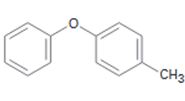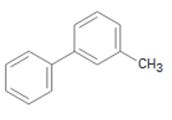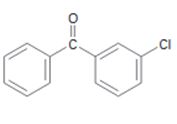
a)

Interpretation:
The position and the ring in which the compound shown is expected to undergo electrophilic substitution is to be stated.
Concept introduction:
In
To state:
The position and the ring in which the compound shown is expected to undergo electrophilic substitution.
b)

Interpretation:
The position and the ring in which the compound shown is expected to undergo electrophilic substitution is to be stated.
Concept introduction:
In aromatic electrophilic substitution reactions both -NH- and halogens are ortho and para directing as they stabilize the carbocation intermediates for these attacks. If two alternate options exist, the electrophile will enter into the more activated ring. The orientation of the incoming electrophile will be decided by the stronger of the two substituent groups already present.
To state:
The position and the ring in which the compound shown is expected to undergo electrophilic substitution.
c)

Interpretation:
The position and the ring in which the compound shown is expected to undergo electrophilic substitution is to be stated.
Concept introduction:
In aromatic electrophilic substitution reactions, both aryl and alkyl are ortho and para directing as they stabilize the carbocation intermediates for these attacks. If two alternate options exist, the electrophile will enter into the more activated ring. The orientation of the incoming electrophile will be decided by the stronger of the two substituent groups already present.
To state:
The position and the ring in which the compound shown is expected to undergo electrophilic substitution.
d)

Interpretation:
The position and the ring in which the compound shown is expected to undergo electrophilic substitution is to be stated.
Concept introduction:
In aromatic electrophilic substitution reactions –C=O group is meta directing while halogens are ortho and para directing. If two alternate options exist the electrophile will enter into the more activated ring. The orientation of the incoming electrophile will be decided by the stronger of the two substituent groups already present.
To state:
The position and the ring in which the compound shown is expected to undergo electrophilic substitution.
Trending nowThis is a popular solution!

Chapter 16 Solutions
EP ORGANIC CHEMISTRY,24 MONTH-OWLV2
- In the drawing area below, draw the major products of this organic reaction: 1. NaOH ? 2. CH3Br If there are no major products, because nothing much will happen to the reactant under these reaction conditions, check the box under the drawing area instead. No reaction. Click and drag to start drawing a structure. ☐ : A คarrow_forwardPredict the major products of the following organic reaction: NC Δ ? Some important Notes: • Draw the major product, or products, of the reaction in the drawing area below. • If there aren't any products, because no reaction will take place, check the box below the drawing area instead. • Be sure to draw bonds carefully to show important geometric relationships between substituents. Note: if your answer contains a complicated ring structure, you must use one of the molecular fragment stamps (available in the menu at right) to enter the ring structure. You can add any substituents using the pencil tool in the usual way. Click and drag to start drawing a structure. Х аarrow_forwardPredict the major products of this organic reaction. Be sure you use dash and wedge bonds to show stereochemistry where it's important. + ☑ OH 1. TsCl, py .... 文 P 2. t-BuO K Click and drag to start drawing a structure.arrow_forward
- Consider this organic reaction: ( Draw the major products of the reaction in the drawing area below. If there won't be any major products, because this reaction won't happen at a significant rate, check the box under the drawing area instead. Click and drag to start drawing a structure. Х : а ค 1arrow_forwardIn the drawing area below, draw the major products of this organic reaction: If there are no major products, because nothing much will happen to the reactant under these reaction conditions, check the box under the drawing area instead. 1. NaH 2. CH3Br ? Click and drag to start drawing a structure. No reaction. : ☐ Narrow_forward+ Predict the major product of the following reaction. : ☐ + ☑ ค OH H₂SO4 Click and drag to start drawing a structure.arrow_forward
- Consider this organic reaction: ... OH CI Draw the major products of the reaction in the drawing area below. If there won't be any major products, because this reaction won't happen at a significant rate, check the box under the drawing area instead. ☐ No Reaction. Click and drag to start drawing a structure. : аarrow_forwardConsider the following reactants: Br Would elimination take place at a significant rate between these reactants? Note for advanced students: by significant, we mean that the rate of elimination would be greater than the rate of competing substitution reactions. yes O no If you said elimination would take place, draw the major products in the upper drawing area. If you said elimination would take place, also draw the complete mechanism for one of the major products in the lower drawing area. If there is more than one major product, you may draw the mechanism that leads to any of them. Major Products:arrow_forwardDraw one product of an elimination reaction between the molecules below. Note: There may be several correct answers. You only need to draw one of them. You do not need to draw any of the side products of the reaction. OH + ! : ☐ + Х Click and drag to start drawing a structure.arrow_forward
- Find one pertinent analytical procedure for each of following questions relating to food safety analysis. Question 1: The presence of lead, mercury and cadmium in canned tuna Question 2: Correct use of food labellingarrow_forwardFormulate TWO key questions that are are specifically in relation to food safety. In addition to this, convert these questions into a requirement for chemical analysis.arrow_forwardWhat are the retrosynthesis and forward synthesis of these reactions?arrow_forward

 Organic ChemistryChemistryISBN:9781305580350Author:William H. Brown, Brent L. Iverson, Eric Anslyn, Christopher S. FootePublisher:Cengage Learning
Organic ChemistryChemistryISBN:9781305580350Author:William H. Brown, Brent L. Iverson, Eric Anslyn, Christopher S. FootePublisher:Cengage Learning Organic Chemistry: A Guided InquiryChemistryISBN:9780618974122Author:Andrei StraumanisPublisher:Cengage Learning
Organic Chemistry: A Guided InquiryChemistryISBN:9780618974122Author:Andrei StraumanisPublisher:Cengage Learning


